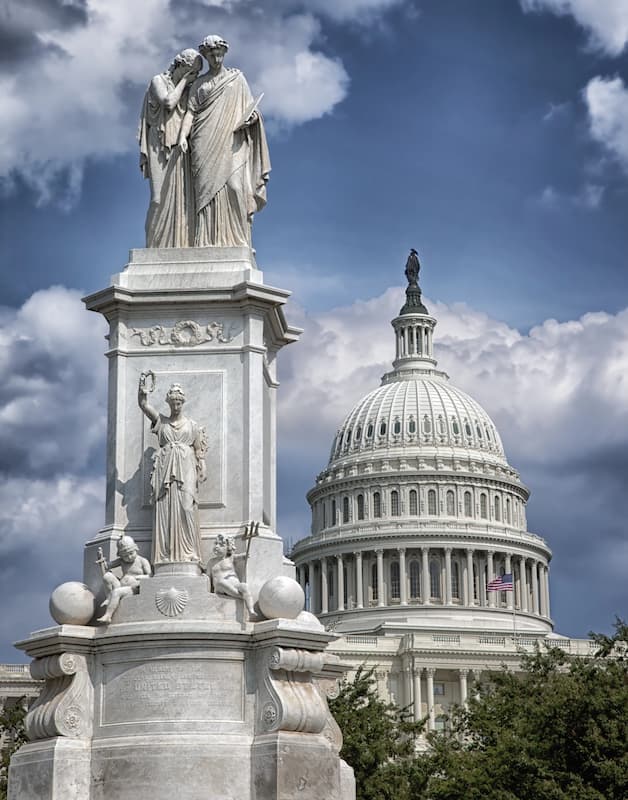The CARES Act passed both houses of Congress and met the president’s signature this evening. Its primary item for small business aid is a $349 billion loan program called the Paycheck Protection Program (PPP) which can be used to support small businesses to maintain their payroll and some overhead expenses through the coronavirus emergency. The stated goal is to keep workers paid and employed during the period of the emergency.
If you’re looking to take part, here’s what you need to know:
- Who can apply?
Businesses and nonprofits, veterans organizations, or tribal businesses with 500 or fewer employees, or under the Small Business Administration standard (if greater than 500 employees), or under 500 employees per physical location for all foodservice companies, are generally eligible for the loans. But the loans aren’t restricted to companies: Individuals operating as sole proprietors or independent contractors or self-employed individuals (including gig workers) also qualify. Qualified borrowers must have been in business before February 15, and must have paid employee salaries and payroll taxes or contractors.
For sole proprietors and independent contractors, “payroll costs” are similarly defined, and include any annual compensation, commissions or other similar payments up to $100,000, as prorated for the period from February 15 to June 30, 2020.
Borrowers need to make good-faith certifications that (a) current economic uncertainty makes the loan necessary, and (b) the proceeds would be used for retaining workers, maintaining payroll, or covering existing overhead costs. They do not need to show that credit was unavailable elsewhere. - What can I use the loan for?
Loan proceeds can be used for payroll support (including group health costs and insurance premiums), employee salaries, mortgage interest or rent payments, utility payments, and interest on existing debt obligations, rather than just the capital costs allowable under existing Section 7(a) programs.
The PPP sets out a comprehensive definition of “payroll costs” (e.g. salary, cash tips, leave benefits, insurance and retirement benefits)—a definition that excludes (a) any compensation for individual employees in excess of a salary of $100,000, as prorated for the period from February 15 to June 30, 2020, and (b) compensation paid to employees residing outside the United States. - How much?
Businesses can receive these small business interruption loans up to 2.5 times their average monthly payroll up to a maximum of $10 million at up to 4% interest rates, depending on how much they paid their employees between January 1 and February 29. - What’s the deadline to apply?
Loans under the PPP are available to eligible recipients through June 30, 2020, with streamlined eligibility criteria.
- When do I have to start repaying?
Lenders are required to defer payments on PPP loans for between six months and one year, with the Small Business Administration to issue deferment guidance to lenders within 30 days of enactment.
- Who’s providing the money?
Loans will be provided through banks, credit unions, and other lenders and will be guaranteed by the Small Business Administration. Loan applications should be submitted through lenders who are partnered with the Small Business Administration, not the SBA itself. - How long will the process take?
The loan process could become a same-day process as early as next week, meaning loans would be signed and disbursed within 24 hours. - Can the loans be forgiven?
The program is meant to ensure that businesses have the funds to pay their employees and to prevent layoffs. Loans offered through the program are forgivable if they are used for their intended purpose. That is, as long as a business receiving a loan maintains the average size of its workforce, it will only need to pay back the interest accrued, and the principal will effectively become a grant. The forgiven amount will be nontaxable. Loan forgiveness is limited to costs incurred between Feb 15 and June 30, 2020.
In order to incentivize the retention of employees at existing salaries, the amount of loan forgiveness is reduced by any reduction in the average number of monthly full-time equivalent (FTE) employees employed by the loan recipient during the eight weeks following disbursement of the loan (the covered period) as compared to the average number of monthly FTE employees employed by the recipient during, at the recipient’s election, either the period between February 15 and June 30, 2019, or the period between January 1 and February 29, 2020. For example, if the recipient had an average of 95 FTE employees during the covered period and an average of 100 FTE employees during the reference period, then the recipient would only be entitled to 95% of the loan forgiveness that would otherwise be available; and the amount of any reduction in total salary or wages of any employee during the covered period that is in excess of 25% of the total salary or wages of the employee during the most recent full quarter during which the employee was employed (taking into account only employees who did not receive, during any single pay period in 2019, wages or salary at an annualized rate of pay in an amount more than $100,000).In order to incentivize the rehiring of employees and the reversal of any recent salary reductions, loan forgiveness will be determined without regard to the reduction in the number of FTEs of a loan recipient and any reduction in salary or wages of employees of a loan recipient, in each case in between February 15, 2020, and 30 days after enactment of the CARES Act, that is eliminated prior to June 30, 2020.
A detailed application and documentation are required for borrowers seeking forgiveness, with lenders required to decide any such application within 60 days, with forgiveness capped at the amount of the loan principal.
- I run a seasonal business. Am I out of luck?
No, there are special provisions for seasonal businesses and businesses that were not in operation between February 15 and June 30, 2019.






